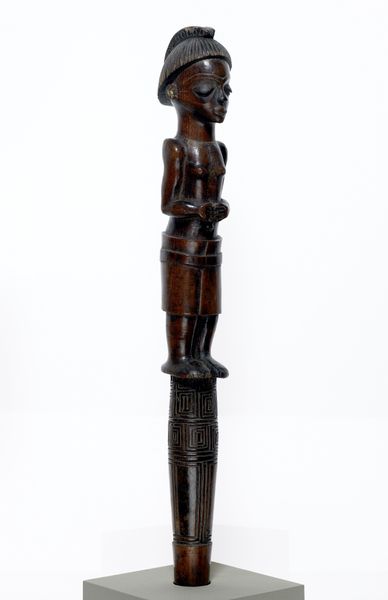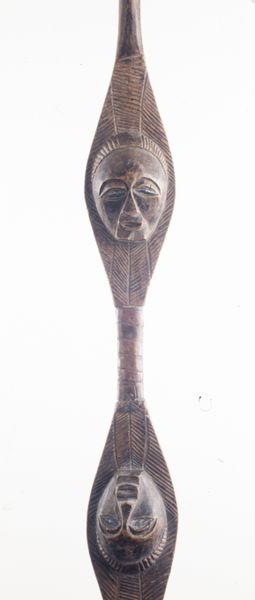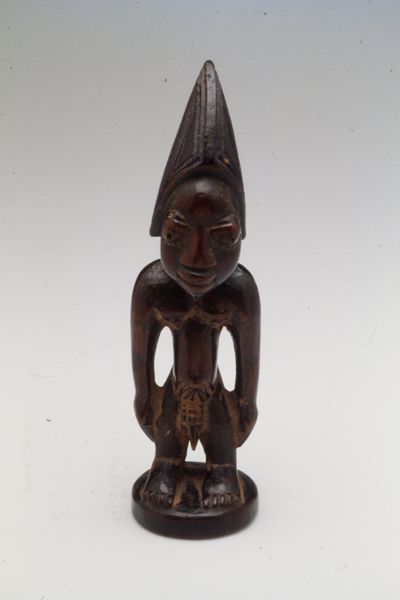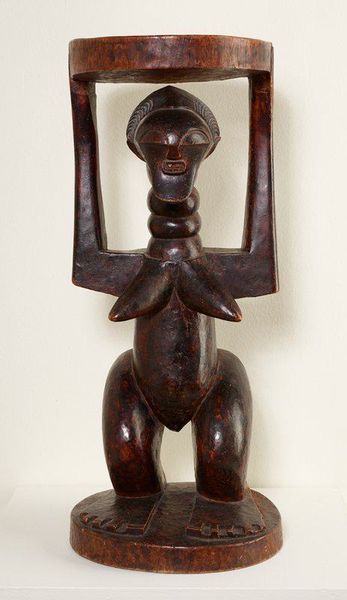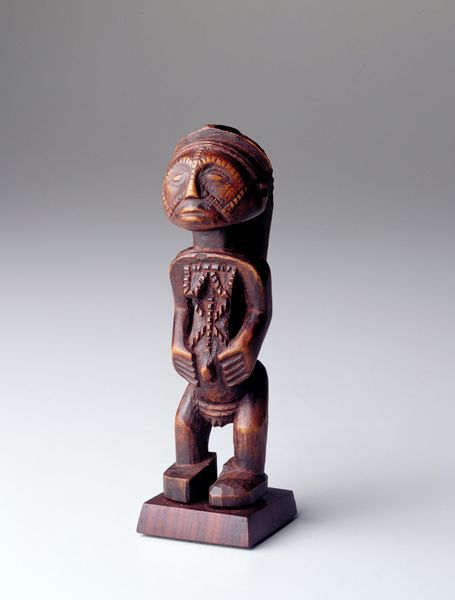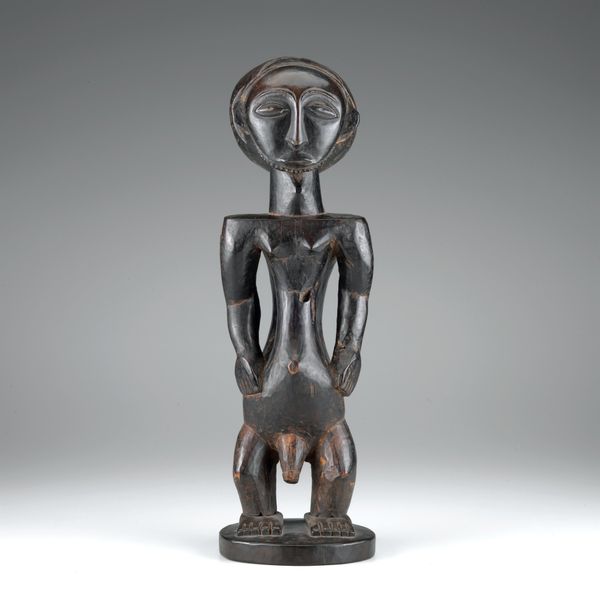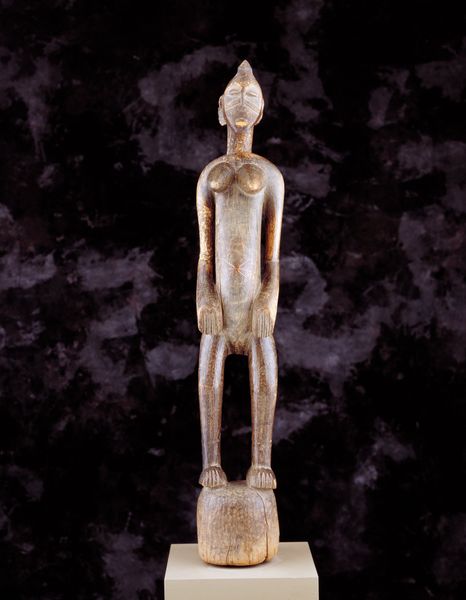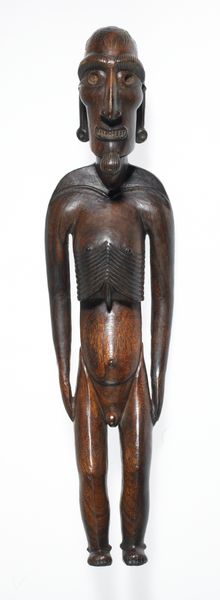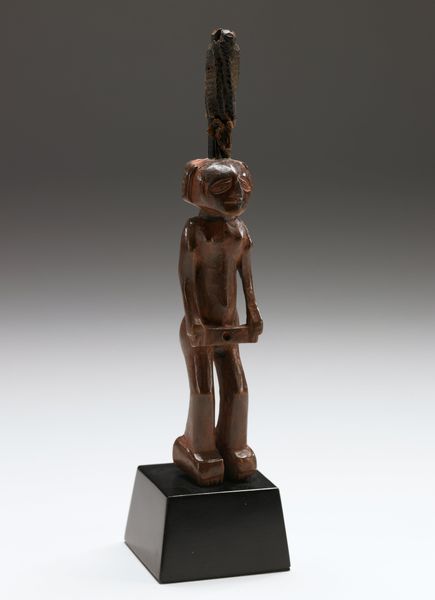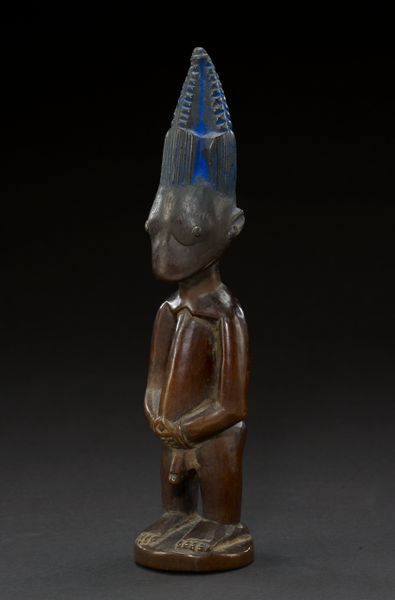
carving, sculpture, wood
#
carving
#
sculpture
#
figuration
#
sculpture
#
wood
Dimensions: 36 1/2 x 1 15/16 x 2 3/16 in. (92.7 x 4.9 x 5.6 cm)
Copyright: Public Domain
Curator: Look at this "Staff" originating sometime in the 19th or 20th century. This captivating wooden sculpture is currently held in the collection of the Minneapolis Institute of Art. What is your immediate reaction? Editor: Stark and serene, a solemn stillness emanates from the carved figure. The dark wood is striking, but it's the subtle variations in the texture that intrigue me most—a dance of smooth surfaces against the rough-hewn details. Curator: Considering its probable function as a staff, power dynamics must come into play here. It likely belonged to someone holding influence in their community. But who was that person? How did gender, race, and social standing affect their experience? Editor: I agree, and the object's linearity really amplifies that impression of authority. The elongated neck and stylized head direct your gaze upwards, establishing a clear visual hierarchy from base to crown. The hands are almost hidden, so the staff seems self-supporting and absolute. Curator: Right. How can we further connect this work with similar explorations into figurations of power throughout history and across cultures? Can we compare this Goma figure with other contemporary sculptures that question gender, class, and post-colonial realities? Editor: It is tempting, yes, and for a future exhibition, the curators could compare similar works! From the perspective of form alone, the verticality gives it the quality of some gothic sculpture; its abstract geometric forms almost harken to a later Modernist movement. Curator: I find it striking that the work is entitled simply "Staff" implying both an everydayness and also a kind of monumentality; a tool imbued with authority. It also provokes an interesting consideration around accessibility. Was such power actually attainable or did its performative aspect serve simply to support inequitable structures? Editor: I see your point. Ultimately, my eyes keep circling back to the hands; it’s not just a functional object, but something cherished, cradled almost like an animate being by whoever carried it. The texture indicates age and perhaps a life story. Curator: I’m also curious about the specific type of wood and the techniques used in the carving—research that could provide clues about its origins and the artisan’s process. But you are right, that warmth seems almost in contradiction with its symbolic role in some senses. Editor: A fine example of the magic achieved when materials and message resonate in perfect accord.
Comments
No comments
Be the first to comment and join the conversation on the ultimate creative platform.
